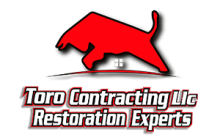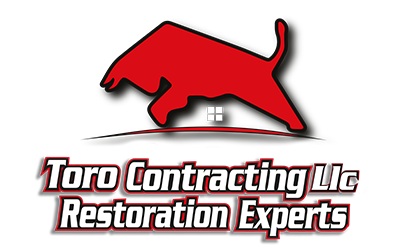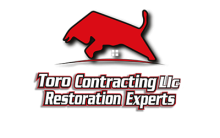Roofs have long been considered merely functional elements, protecting us from rain, sun, and snow. But today, creative roof designs for modern homes are pushing boundaries, turning these overhead coverings into bold statements of style, sustainability, and innovation. Whether you’re an architecture enthusiast, a homeowner planning a remodel, or just curious about design trends, this article will open your eyes to the endless possibilities rooftops hold.
Key Takeaways
Durability Meets Design: 2025’s top floor materials blend long-lasting performance with sleek, contemporary looks.
Eco-Conscious Choices: Cork, bamboo, and recycled composites minimize environmental impact without sacrificing style.
Waterproof & Kid-Proof: Luxury vinyl planks and porcelain tiles offer both aesthetic appeal and resistance to moisture, scratches, and heavy wear.
Comfort & Acoustics: Cork and engineered wood add warmth underfoot and naturally dampen noise, enhancing home tranquility.
Versatile Textures: From polished concrete’s industrial chic to resin’s seamless gloss, there’s a texture to suit every modern décor.
Tech-Enhanced Innovation: Antimicrobial coatings, waterproof cores, and click-lock installation systems make upkeep a breeze.
Health & Safety First: Low-VOC, hypoallergenic floors support better indoor air quality and family well-being.
Why Creative Roof Designs for Modern Homes Are More Important Than You Think
When it comes to modern homes, the roof is much more than just a protective cover. Creative roof designs for modern homes blend functionality with aesthetics, becoming a pivotal aspect of architectural innovation. But what exactly are creative roof designs, and why are they gaining so much importance in today’s housing market?
Creative roof designs for modern homes encompass a variety of innovative shapes, materials, and technologies that move beyond traditional roofing concepts. Instead of merely shielding the interiors from weather elements, these roofs contribute to energy efficiency, improved ventilation, and enhanced outdoor living spaces. From green roofs to asymmetrical slopes, and from solar panel integration to unique materials like metal and recycled composites, the possibilities are vast and exciting.
The importance of creative roof designs can be seen through various lenses. Environmentally, they contribute significantly to sustainability. For example, green roofs, roofs covered with vegetation, can reduce urban heat and improve air quality. Studies reveal that green roofs can reduce energy costs by up to 30%, providing both homeowners and the environment with meaningful benefits. Additionally, integrating solar panels into roof designs not only cuts electricity bills but also increases a home’s market value.
From a market perspective, homes with standout roof designs capture more buyer attention. According to a 2023 survey by the National Association of Realtors, 48% of homebuyers consider unique architectural features, including roof design, as a significant factor when making purchasing decisions. This means that creative roof designs for modern homes don’t just improve living quality, they also enhance property value and curb appeal.
Take the example of the Smith family in Portland, Oregon, who recently renovated their mid-century home by installing a skillion roof, a single sloping surface that offers a sleek, modern look. Beyond aesthetics, the design maximized natural light inside the house and allowed for efficient rainwater harvesting. The family reported not only lower energy bills but also an increase in home equity after the renovation, a testament to how creative roof designs can transform modern living.
How to Apply Creative Roof Designs for Modern Homes Step by Step
Designing a roof that truly complements a modern home involves more than just choosing a style; it requires careful planning, understanding architectural harmony, and creativity. If you want to embrace creative roof designs for modern homes effectively, this step-by-step guide will walk you through the process from concept to completion.
- Assess Your Home’s Architecture and Environment
Before diving into creative roof designs for modern homes, understanding your existing home structure is crucial. Evaluate architectural styles (minimalist, industrial, contemporary), local climate, and environmental factors. For example, flat or low-pitched roofs suit arid climates and minimalist designs, while sloped or curved roofs help manage heavy rainfall or snow.
Key Tip: Note that the most stunning creative roof designs for modern homes are those that feel like a natural extension of the building’s architecture instead of an afterthought.
- Define the Purpose and Functionality
Creative roof designs for modern homes aren’t just about aesthetics; functionality matters. Decide what you want your roof to achieve:
– Energy efficiency: Should the roof support solar panels or green roofing?
– Outdoor spaces: Do you want a rooftop garden or terrace?
– Natural lighting: Would skylights or glass panels fit your needs?
By clarifying the purpose early, your creative roof design will blend beauty and practicality seamlessly.
- Choose Your Roof Style Wisely
Explore different roof styles that align with modern aesthetics. Some popular creative roof designs for modern homes include:
– Butterfly Roof: A modern, inverted V-shape that captures rainwater and offers a dramatic visual impact.
– Shed Roof: Single sloping surface, ideal for minimalist, clean lines.
– Curved Roof: Smooth curves soften the building’s angularity and add a futuristic vibe.
– Green Roof: Integrates plants and soil for sustainability and insulation.
Each style offers unique visual flair and functional benefits, so pick one that suits your lifestyle and architectural goals.
- Select Appropriate Materials and Colors
The materials chosen for creative roof designs for modern homes influence durability, maintenance, and visual appeal. Consider the following:
– Metal Roofing (e.g., aluminum, zinc): Durable, modern, and allows for sharper angles.
– Concrete or Tile: Offers texture and thermal mass, great for Mediterranean-inspired modern homes.
– Glass or Polycarbonate: Perfect for skylights, creating light-filled spaces.
– Green Roof Systems: Layers for planting vegetation on flat or low-sloped roofs.
Color plays a key role as well; neutral tones like greys, blacks, or whites generally complement modern homes, but bold contrasts can also work depending on your design intent.
- Collaborate with Professionals for Customization
Creative roof designs for modern homes often require structural considerations a professional architect or roofing contractor can best handle. They will:
– Evaluate structural integrity for unusual shapes or materials.
– Ensure code compliance and safety.
– Incorporate technological elements like solar or smart system integration.
Working closely with experts guarantees your vision for creative roof designs for modern homes transitions smoothly from sketches to reality.
- Visualize Your Design with 3D Modeling and Renderings
Once you settle on a concept, utilize 3D modeling software or architectural renderings to preview your creative roof design for modern homes. This step helps you:
– Identify potential conflicts or awkward angles.
– Experiment with color and material choices.
– Communicate your design clearly with contractors and family members.
- Prepare Your Home and Neighborhood for Installation
Before installation of your creative roof designs for modern homes starts, consider:
– Obtaining necessary permits from local authorities.
– Informing neighbors about construction timelines.
– Scheduling the work during favorable weather.
– Planning budget contingencies for unexpected changes.
- Monitor Construction and Quality Control
During the installation, stay actively involved to ensure quality control. For creative roof designs for modern homes, specialized techniques might be needed, so verify that:
– Materials used match your specifications.
– Installation follows design details.
– Structural safety is prioritized.
- Final Inspection and Maintenance Plan
After completion, conduct a thorough inspection with your contractor. Confirm:
– No leaks or structural issues.
– Proper drainage systems are functioning.
– Finishing touches meet your expectations.
Also, set up a maintenance plan specific to your creative roof design for modern homes, for example, green roofs require seasonal plant care, while metal roofs may need anti-corrosion treatments.

Tips for Creative Roof Designs for Modern Homes:
✅ Embrace Green Roofs: Incorporate vegetation to enhance insulation and reduce urban heat.
✅ Use Asymmetrical Shapes: Break the mold with unconventional roof lines for a striking look.
✅ Integrate Skylights: Maximize natural light and create an airy atmosphere indoors.
✅ Opt for Sustainable Materials: Choose eco-friendly roofing materials like recycled metal or bamboo.
✅ Play with Multi-Level Roofs: Add depth and dimension by designing roofs with varying heights.
✅ Incorporate Solar Panels Seamlessly: Blend solar technology into the roof design for energy efficiency.
✅ Use Contrasting Colors and Textures: Create visual interest by mixing materials such as metal and wood.
✅ Consider Overhangs and Canopies: Provide shade and protection while adding a dynamic element to the exterior.
💡 Extra tip: Collaborate with an architect early to align the roof design with the overall modern aesthetic and functional needs.
Concepts Key
When we delve into the realm of creative roof designs for modern homes, we are essentially exploring a dynamic intersection between functionality, innovation, and aesthetic expression. Roofs, often perceived as mere protective coverings, transform into powerful statements of architectural ingenuity. Understanding the core concepts behind these designs is pivotal to appreciating their role in shaping contemporary living spaces.
The Roof as a Canvas of Creativity
Imagine the roof not just as a shield against the elements but as a vast canvas primed for artistic exploration. In modern architecture, roofs transcend utilitarian norms, evolving into sculptural elements that define a home’s character. This shift is akin to a painter swapping a traditional square canvas for a three-dimensional structure that interacts with light, shadow, and environment.
Rather than adhering to symmetrical and predictable slants, creative roof designs often embrace asymmetry, curves, and intersecting planes. Think of a roof as a flowing river frozen in time or a ribbon delicately folding across the skyline. This conceptual leap from static to expressive form challenges conventional perceptions, inviting both homeowners and architects to innovate boldly.
Integration of Nature and Structure
A fundamental concept in innovative roofing is the seamless integration of nature with architectural form. Green roofs, for example, blur the line between constructed and organic spaces. They conceptually echo the idea of rooftops as extensions of the earth rather than impositions upon it. Envision walking into a home where the roof blooms with vegetation, providing insulation and fostering biodiversity, a sort of rooftop garden that breathes life into the urban environment.
This symbiosis between structure and ecology embodies a philosophy of sustainability and harmony. It’s similar to a symphony, where the various instruments (materials, design, environment) meld effortlessly, each enhancing the other without overpowering.
Functionality Meets Futurism
Modern roof designs are not just about appearance; they embody the principle that form should enhance function. Conceptually, this marries the pragmatic with the visionary. Take, for instance, the integration of solar panels seamlessly embedded within unconventional rooflines, where technology is not merely appended but woven into the architectural story.
Imagine the roof as a living organism attuned to its environment, adapting and responding to energy needs, weather patterns, and aesthetic shifts. This fusion of technology and design represents a conceptual breakthrough, where the roof becomes an active participant in the home’s ecosystem.
Geometric Exploration and Minimalism
An essential concept within modern roof designs is the exploration of geometry, pure, clean, and sometimes bold. Geometric roofs often utilize triangles, trapezoids, or polygonal shapes, creating a striking visual rhythm. This is reminiscent of origami, where flat sheets transform into complex, multidimensional forms through folds and creases.
Minimalism underpins much of this exploration, stripping away excess for clarity and form. The roof becomes an architectural statement of less is more, where each line and angle is deliberate, fostering a sense of balance and sophistication in the overall design.
Cultural Narratives and Identity
Every roof tells a story, often reflecting cultural identity and historical context reinterpreted through a modern lens. Creative roof designs can embody regional traditions encoded in contemporary materials and techniques, much like a novel that revives ancient tales with a fresh voice.
For example, a sweeping curved roof might draw inspiration from traditional Asian architecture but expressed with steel and glass rather than timber and ceramic tiles. This narrative layering enriches the home’s identity, connecting past to present, local to global.
Emotional and Psychological Dimensions
Finally, creative roof designs carry emotional and psychological weight. They influence how inhabitants feel within the space and how the dwelling is perceived in its surroundings. A dramatic cantilevered roof can evoke awe and a sense of protection simultaneously, like a bird’s wing sheltering its young.
In essence, roofs are storytellers written in shapes and shadows, conveying feelings of safety, openness, or innovation. They orchestrate the relationship between the inside and outside world, guiding light, sound, and air to cultivate a sanctuary tailored to human experience.
In summary, creative roof designs for modern homes are far more than architectural features, they are multidimensional concepts weaving together art, environment, technology, geometry, culture, and emotion. Each roof stands as a testament to human creativity, transforming the shelter into an inspiring work of living art.
Frequently Asked Questions about Creative Roof Designs for Modern Homes
❓ What are some popular materials used in creative roof designs for modern homes?
Creative roof designs for modern homes often incorporate materials like metal, concrete, green roofs (vegetative layers), solar tiles, and even glass. These materials not only enhance aesthetics but also improve durability and energy efficiency.
❓ How can a creative roof design improve the energy efficiency of a modern home?
A creative roof design can include features such as reflective coatings, green roof systems, and solar panels. These elements help reduce heat absorption, promote insulation, and generate clean energy, significantly lowering energy bills.
❓ Are creative roof designs more expensive than traditional roofs?
While initial costs might be higher due to the unique materials and engineering required, creative roof designs often offer long-term savings through increased durability, reduced maintenance, and energy efficiency. Additionally, they can add substantial value to the property.
❓ Can creative roof designs be customized to fit different climate conditions?
Absolutely. Modern creative roof designs are highly adaptable and can be tailored to suit various climate challenges like heavy rain, snow, heat, or wind. For instance, sloped green roofs are excellent for rainy climates, whereas reflective roofs work well in hot regions.
❓ Do creative roof designs require special maintenance compared to traditional roofs?
Maintenance requirements vary depending on the materials used. For example, green roofs need periodic care like watering and plant trimming, while metal roofs might require inspections to prevent rust. Overall, many creative roof designs are engineered for longevity and ease of maintenance.






